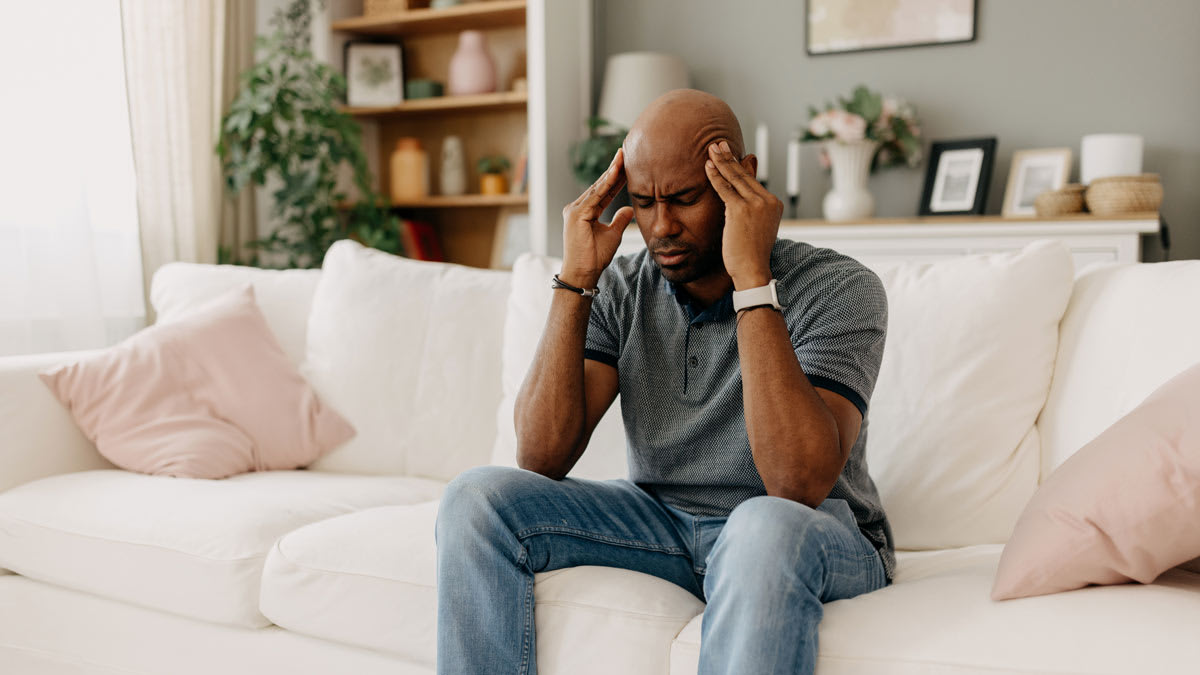Signs and symptoms: About 10 percent of older adults regularly have the throbbing, pulsing pain of migraine, which can last for hours or days. Pain is usually only on one side of the head, but older adults more frequently have it on both, “which may lead them and their doctor to think they may have a tension-type headache,” says Chantel Strachan, MD, a headache specialist and internist at Columbia University Irving Medical Center in New York City. Older adults are also more likely to have eye tearing and a runny nose.
Prevention: Follow a consistent eating and sleep schedule, keep a headache diary to help pinpoint triggers to avoid, and get regular exercise. Shae Datta, MD, a neurologist at NYU Langone Health in New York City, recommends six small meals a day, with a good balance of protein, fiber, and healthy fats. Your doctor may also suggest a supplement such as magnesium. Not enough? Beta-blockers like propranolol (Inderal and others), antidepressants like amitriptyline (Elavil and others), and antiseizure drugs like topiramate (Topamax and others) may ward off migraines. People with more than 15 monthly migraines may benefit from botulinum toxin (Botox) injections.
Treatment: The American Migraine Foundation suggests dimming the lights and applying cold compresses to your temples and the back of your neck. Massaging your neck may relieve tension and stress, which can exacerbate pain. For mild migraines less than four times a month, an OTC pain reliever or NSAID may be enough—with your doctor’s okay, Rapoport says. If not, triptans such as sumatriptan (Imitrex and generic), naratriptan (Amerge and generic), and rizatriptan (Maxalt and generic) may be effective. But these aren’t advised if you have cardiovascular disease because they may constrict blood vessels in the heart, according to Rapoport. In that case, options include:
At-home electrical stimulation devices like Cefaly or Nerivio, which can treat and prevent migraine: “Some stimulate specific nerves, such as the trigeminal nerve—which connects to the brain stem, where migraine pain starts,” Rapoport says. Others kick-start the body’s pain-relieving systems.
CGRP antagonists: Medications such as ubrogepant (Ubrelvy and generic), rimegepant (Nurtec and generic), and zavegepant (Zavzpret and generic) block CGRP, a neurotransmitter that can worsen a migraine.
Source link
